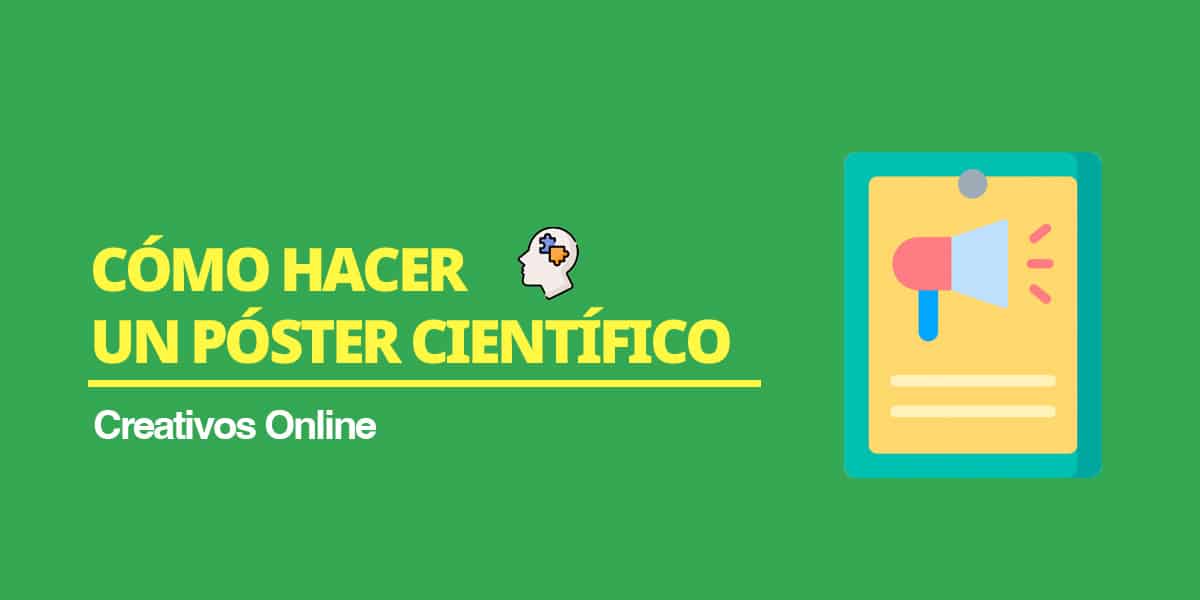
This time we are going to design a scientific poster for your project. Unlike a graphic design advertising poster, These must include some elements that are crucial for the development of the same. Since when it comes to a creative poster, banner or any other advertising element you can include elements with more freedom. That is, to make a design for a movie you will include very different elements than how to make a scientific poster.
The elements that a scientific poster has to include are more technical and objective. Because this one wants to demonstrate something more than a simple visual to convince you to see or buy. He wants to determine what is real or not. Or at least a study that is closer to it. That's why the visual is important, since once you publish it you want everyone to understand it. But you need it to also have the essential information to carry out.
The first part: the title

At the top there is no space to invent or encourage reading. As happens in the final degree or master's degree projects, the scientific poster has to highlight an institutional regulation. In this part of the poster we are going to place a title. This should be the official scientific study being conducted. Since it must be completely visual and at first sight know what the study in question is about.
Right at the bottom of this same title and in a smaller size, the name of the authors and their affiliation. For example, you can put "Juan Muñoz" and then "Theoretical Physicist". This will give greater credibility to the study, since it is created by people from the sector who are dedicated to the profession of which the poster speaks. Even today, they could add some social profile to show people with a friendlier face.
Across the title and at the top (Usually more to the right) the shield of the institution that carried out the study is placed. Whether it is a private or public company, the studies have been carried out through their financing. And not only for financing, but because it determines that the institution itself has approved this study and gives credibility to the conclusions that have been carried out.
Introduction, objectives and methodology

For the next section we will establish three specific points. The introduction, which should be a brief text where you indicate what we are going to see in this poster. How could a study of physics be, because what is this study about and why it has been carried out. In this way, and with the naked eye, it is clear to whoever starts reading it, what they will find in the rest of the scientific poster design. This text should not be too long and should not go into details.
Second, the goals. For these we should present what we want to show from the resulting study. If there was a previous theory that is wrong or could be wrong, knowing that the objectives of the study is to correct them. If there is no type of study and it is a new discovery, then establish some objectives that are direct so that they understand the importance of carrying out this study, how it was proposed and if they have reached those objectives.
And finally, the methodology carried out. In this section it is important to make clear how the study was carried out.. Since there are methodologies that are contrary to many scientists in depending on what areas. It is not the same to establish a scientific criterion as a result of a survey of 100 random people, than to do it with a more objective method through already contrasted tests. This can give more credibility to the specific study.
Results and conclusions
In the next section, wider than all the previous ones, where we can fit all the previous sections in the upper half, we will establish results and conclusions. This is the root of everything, since it is to establish a good design to place the key points of an investigation that could have taken years. So you have to be very careful with what information is placed and what is left for the final study. Since that study will not be read by everyone as it is more technical.
The results are usually established in a graph and come to say that objective facts have been found during the study. These facts are not an opinion, but are left up for interpretation by anyone who reads it. This graph can be established on the left side leaving the right side for the conclusions.
The conclusions, unlike the results, if it is an opinion of the experts who carry out the study. And it is the interpretation of the results, from their knowledge, of the study they have carried out. This opinion has a higher criterion and is what the study determines. That is why it is important to give a good space to this part, since it will be the result of subsequent studies carried out on the matter.
Study Bibliography
As in many works, in the final part is the bibliography. An area that not everyone reads and that seems to be unimportant but that is key. Since these are the documents from which all the study that we have carried out previously has been supported. Through these sources of information and the knowledge of experts in the field, it has been possible to carry out this study. So it is important to add them.
These bibliographical references that we add at the bottom of the scientific poster will be between 3 or 4. There should be no more, since the area should be clean and clear. Also it would be a good option to place a QR code on the other side so that people who want to know more references can access through this tool. And also, to see the complete study if they wanted to.